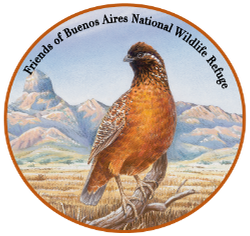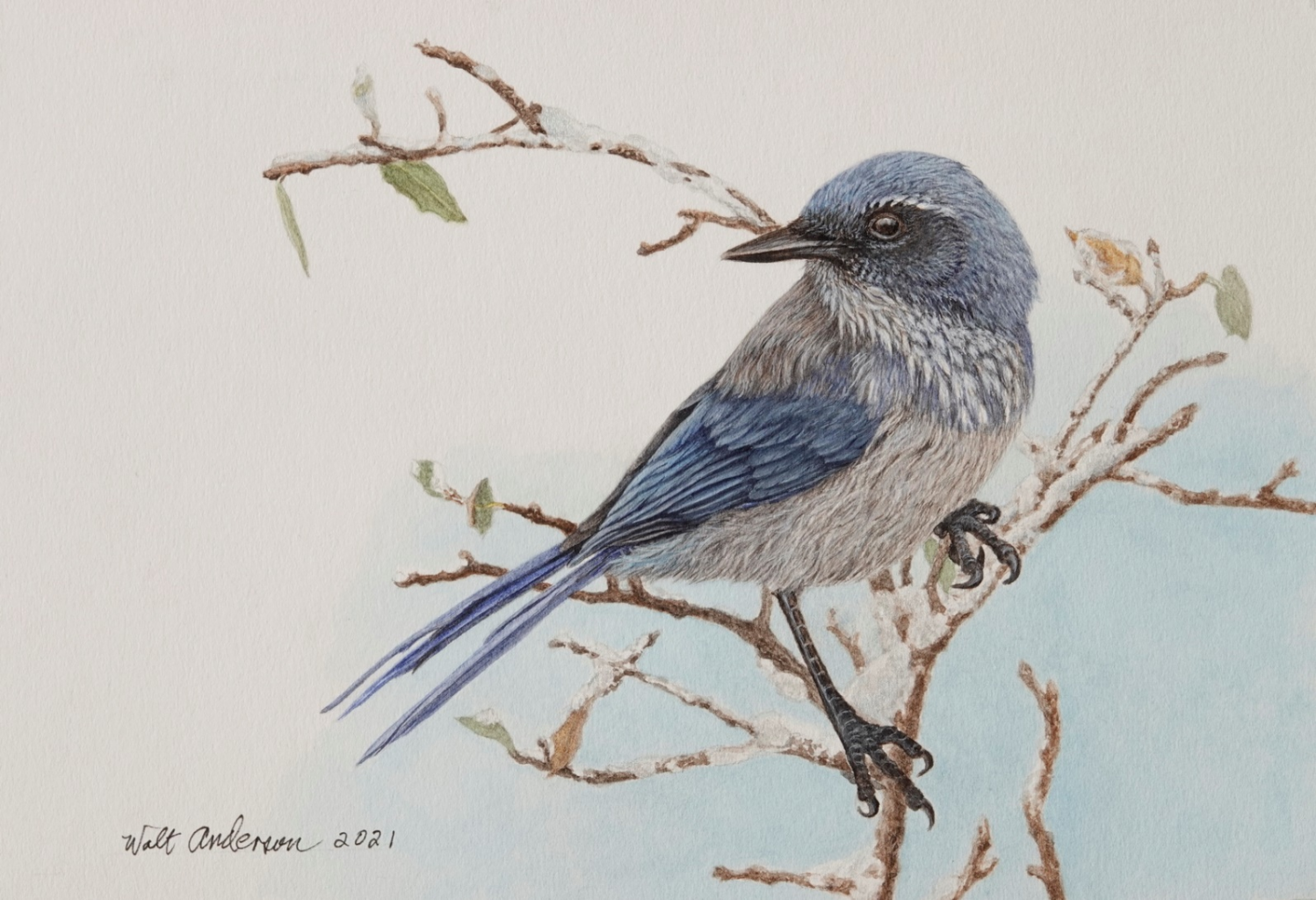
Jay Walking.
by Walt Anderson
If you’re from Kansas, you may be familiar with the Jayhawk, the mascot of the Kansas athletic teams. Coined in 1848, the term referred to the faction that opposed slavery and wanted a “free state.” As quarrelsome as a jay and as fierce as a hawk, this mythical hybrid was a fighter for its cause, now an inspiration to the sports fans. The KU webpage says that “the factions looted, sacked, rustled cattle, and otherwise attacked each other’s settlements.” Sounds a bit like today’s congressional partisanship.
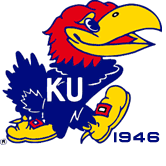
Well, like Dorothy in the Wizard of Oz, “we’re not in Kansas anymore.” Still, many Arizonans harbor myths about “our” jays. I often hear folks talking about the blue jays in their yards. Well, yes, they have jays, and they are basically blue, but the proper Blue Jay is an eastern US species that has only been recorded in SE Arizona a couple times. We have four species of “blue jays” in Arizona: the Steller’s, Mexican, Pinyon, and Woodhouse’s Scrub-Jay. I’ll focus on the scrub-jay in this essay, but I’ll show examples of the others for comparison. It’s time to set the record straight, so let’s do some jay walking.
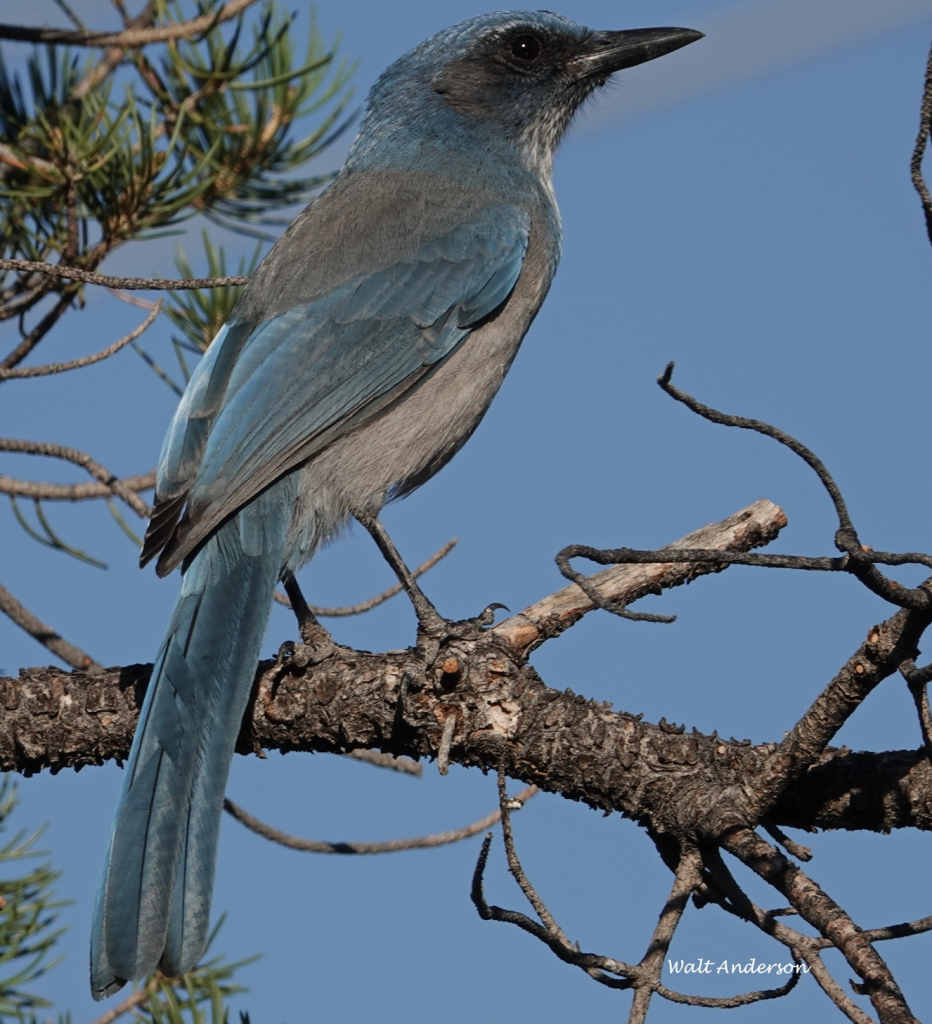
Even the term “scrub-jay” needs a qualifier to be accurate, as there are now several species, each mostly geographically separated. Not many years ago, all scrub-jays in the West were called, simply enough, the Western Scrub-Jay, distinguished easily from the Florida Scrub-Jay, a bird listed federally as Threatened. A few years ago, research indicated that the term “Western” hid the reality of speciation, so now we have the California Scrub-Jay along the Pacific coast, the Island Scrub-Jay restricted to Santa Cruz Island off the California coast, and our Woodhouse’s Scrub-Jay, most common in pinyon-juniper and chaparral habitats in Nevada, Utah, Colorado, West Texas, New Mexico, and mid-elevations of Arizona. There is a population in southern Mexico that might be a subspecies, but it could be a distinct species, Sumicrast’s Jay. At any rate, Woodhouse’s Scrub-Jay is not that closely related to the true Blue Jay, a sibling species of the Steller’s Jay; both of those species have crests.
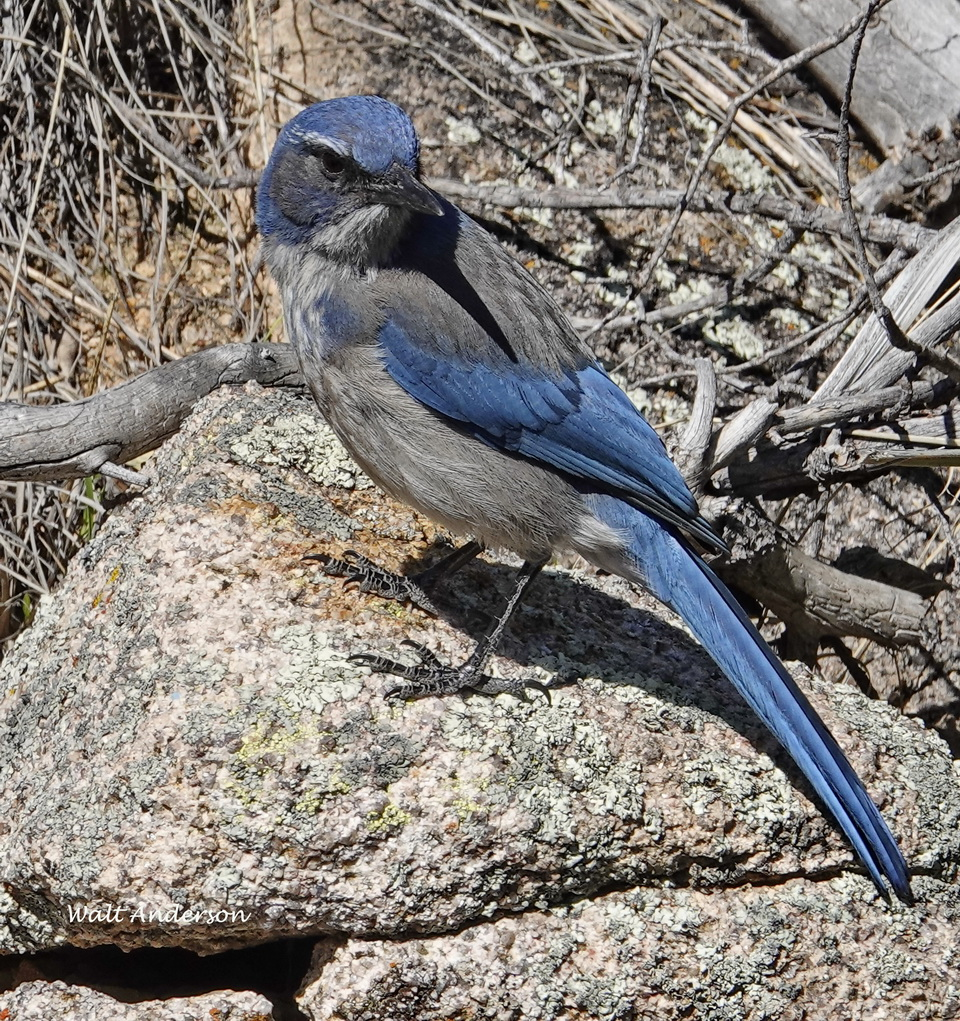
Compared to the relative “tameness” of the California Scrub-Jay and the Mexican Jay, Woodhouse’s has been described as “shy and retiring” and “furtive.” Of course, smart birds like these have distinct personalities (avinalities?), and I have seen many that I would describe as brash, brazen, and cheeky. In our yard, a jay arrives at high speed at the feeders with loud warnings that tend to scatter the smaller birds already there. Even flickers, armed with daggerlike beaks, defer to the more aggressive jays.
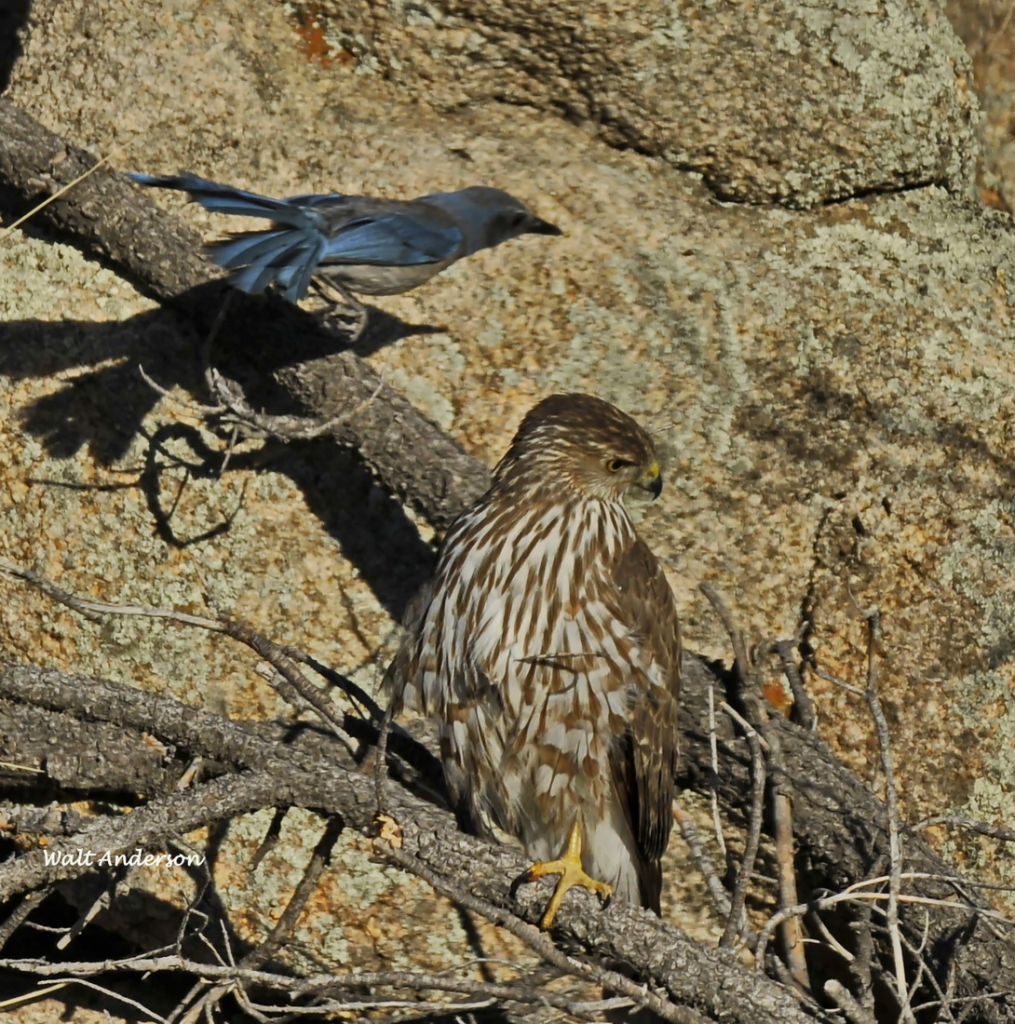
Cooper’s Hawks intimidate most small local birds, but scrub-jays readily mob them, often spoiling any accipiter’s hopes for a surprise attack on a quail, towhee, or woodpecker. How lucky I was to catch this jay dive-bombing an immature Cooper’s Hawk! It’s amazing that as fast as the jay is flying, its shadow is actually keeping up.
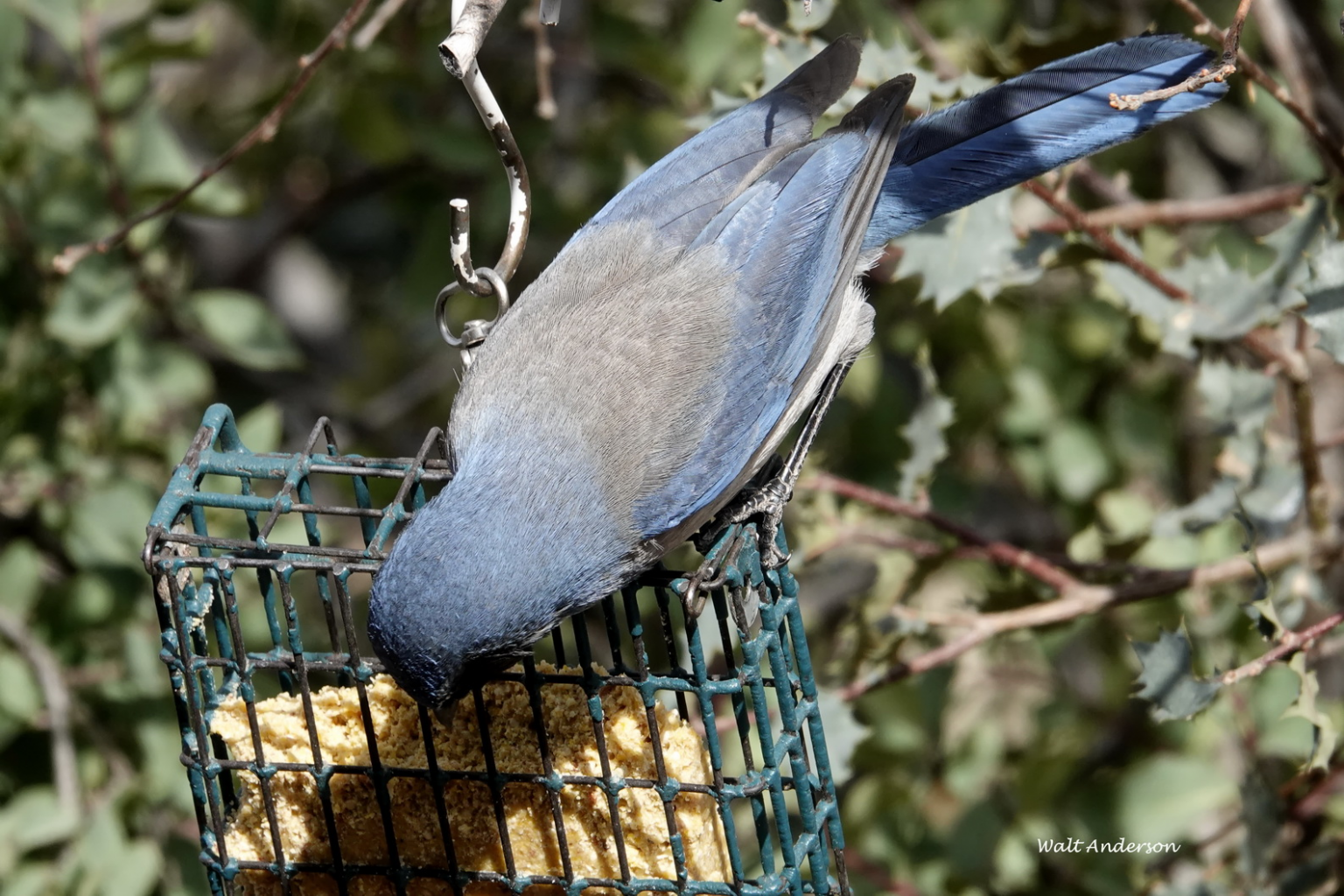
Scrub-Jays are omnivorous and opportunistic, devouring small insects, reptiles, bird eggs and nestlings, acorns, manzanita fruits, juniper seeds, and anything else that looks edible. They love sunflower seeds and suet, and they are sloppy feeders, allowing ground birds to gorge on scraps that fall below the feeder. They readily eat mature pinyon seeds but are unable to open the green cones, so when Clark’s Nutcrackers or Pinyon Jays have opened green cones, scrub-jays launch loud surprise attacks that often end up with opened cones falling to the ground. That’s kleptoparasitism, and it looks mighty smart to us human observers!
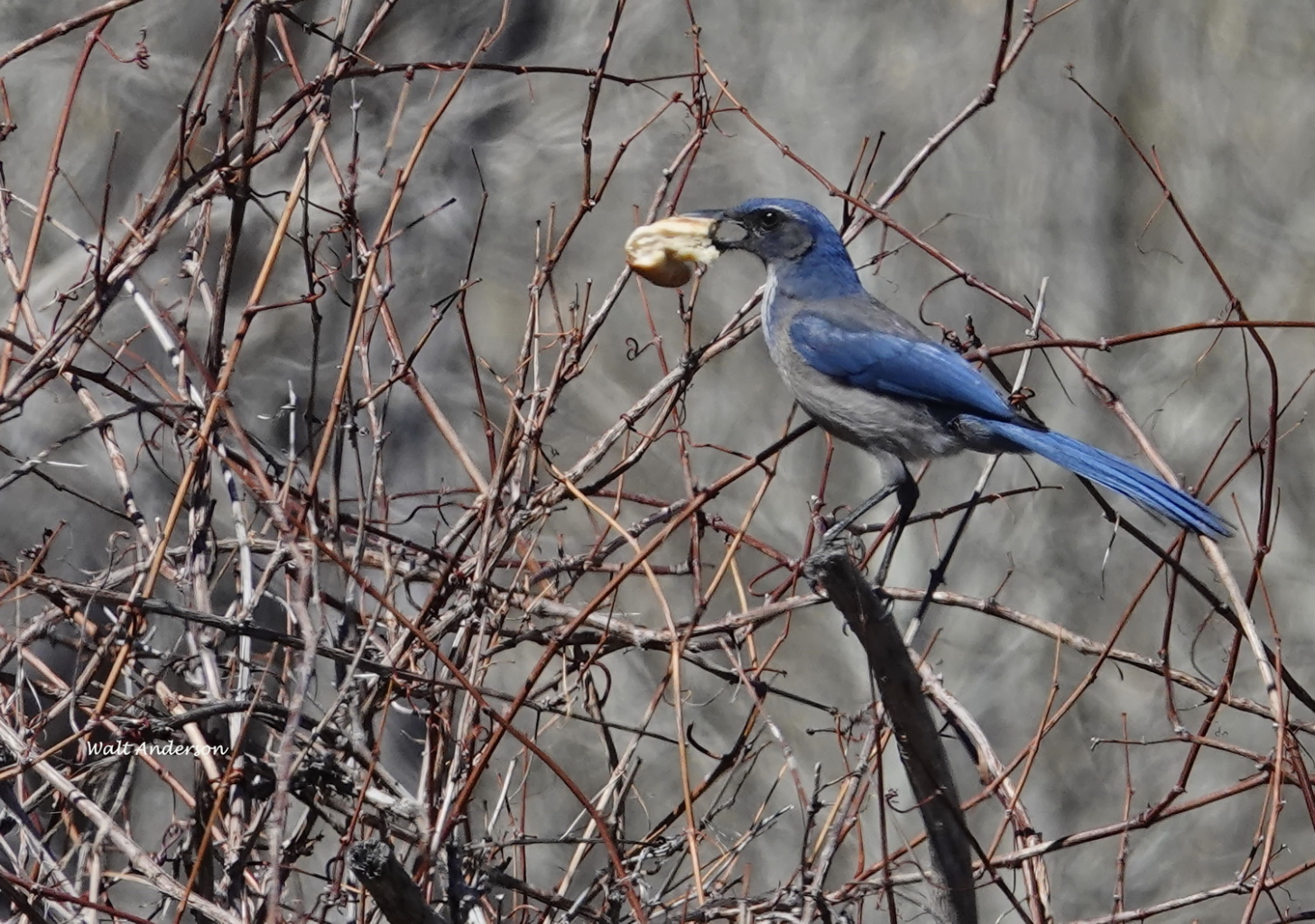
This jay is obviously the breadwinner of the family. I see that the bird is eyeing a tangle of wild grapes, perhaps hoping to find a little wine to go with the bread.
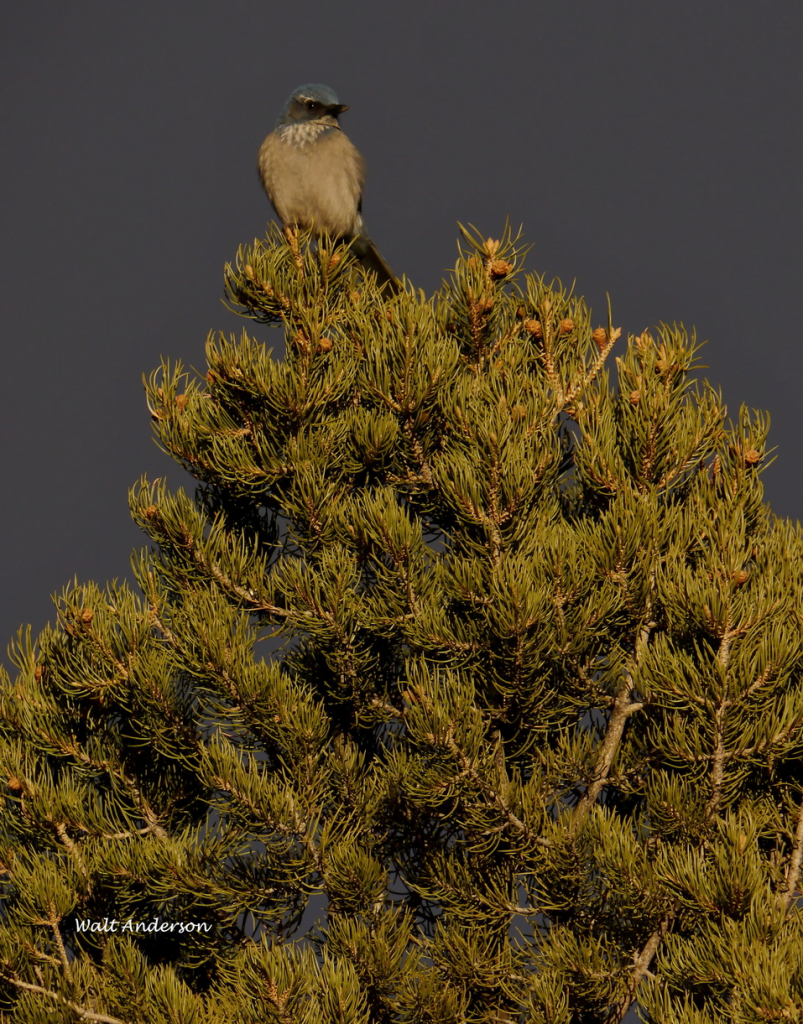
There have been many studies on the intelligence of these birds, which are in the family Corvidae, along with the clever crows and ravens. They gather more pinyon seeds than they can eat at once, for example, and scatter-hoard them about the landscape, often marking an individual cache with a stone or leaf or something else distinctive. One jay stored over 6000 items one autumn and had an excellent memory for retrieval months later. Their brains have enlarged hippocampus regions associated with memory (they never lose track of their keys or cell phones). Not only do they remember landmarks well; they also can locate items with respect to solar orientation! Notorious nest robbers, they watch the behavior of other birds and seem to understand behaviors that give away a nest’s location. When applied to corvids, the term “bird brain” is actually a compliment.
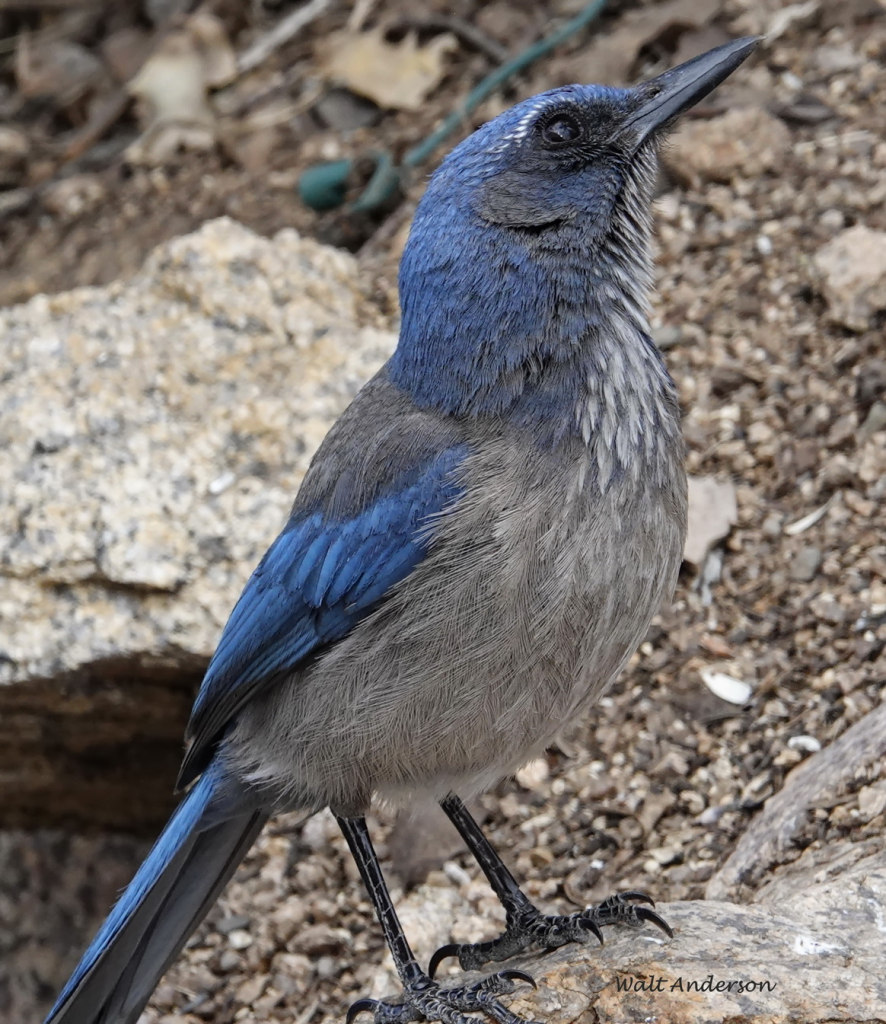
So how do we tell the Woodhouse’s Scrub-Jay from the other “blue jays” in the region? Adult birds have a blackish cheek, white eyebrow, grayish back and belly, and whitish throat with fine blue streaks. Of course, its vocalizations are distinctive.
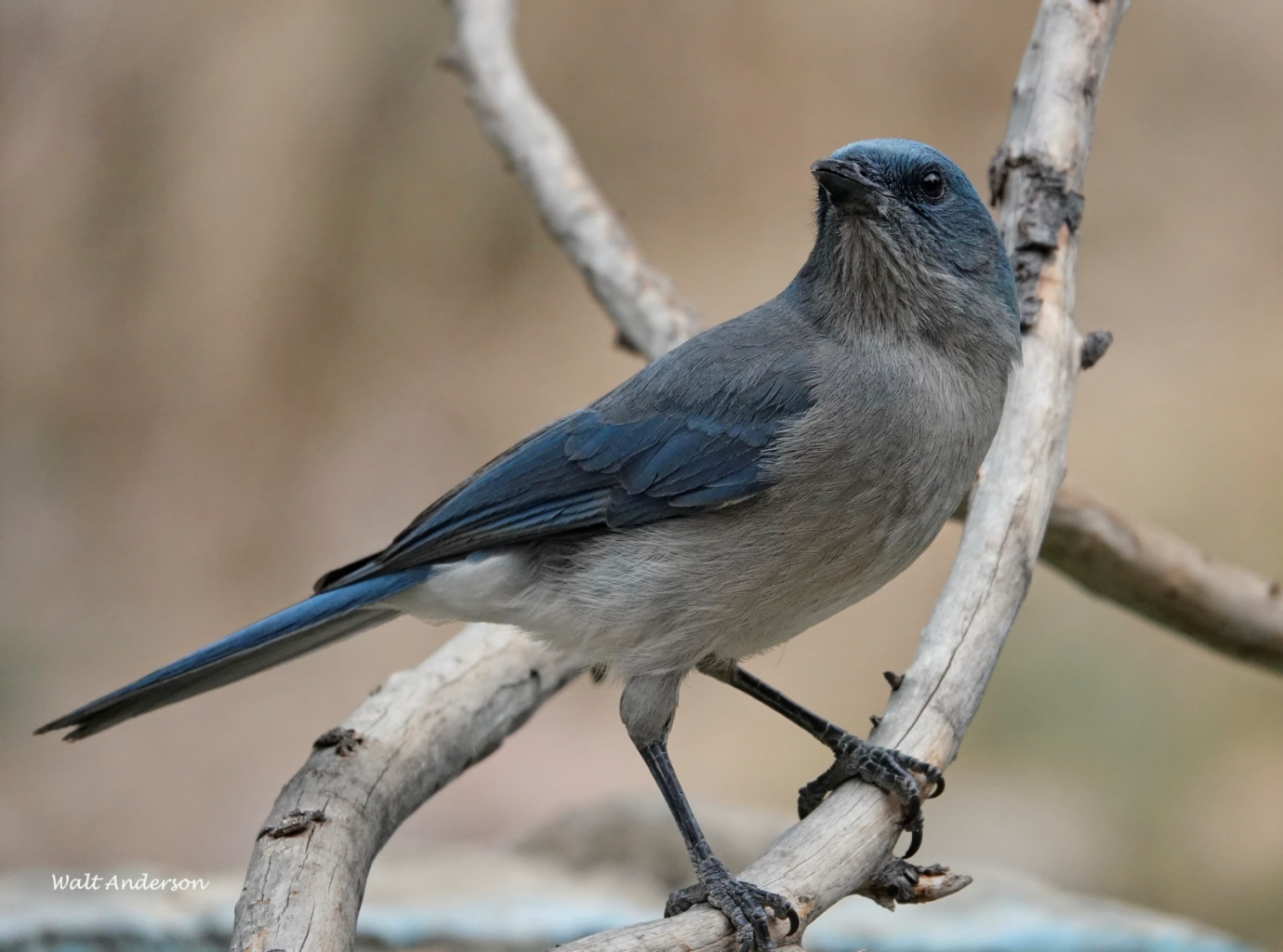
The Mexican Jay found in the Sky Islands of SE Arizona, including the Baboquivaris, is more uniformly colored without the blackish cheek or white brow. It is a much more social bird typically found in large, noisy flocks. In Brown Canyon, it tends to live closer to the canyon bottoms than does the Woodhouse’s Scrub-Jay, which prefers brushy hillsides.
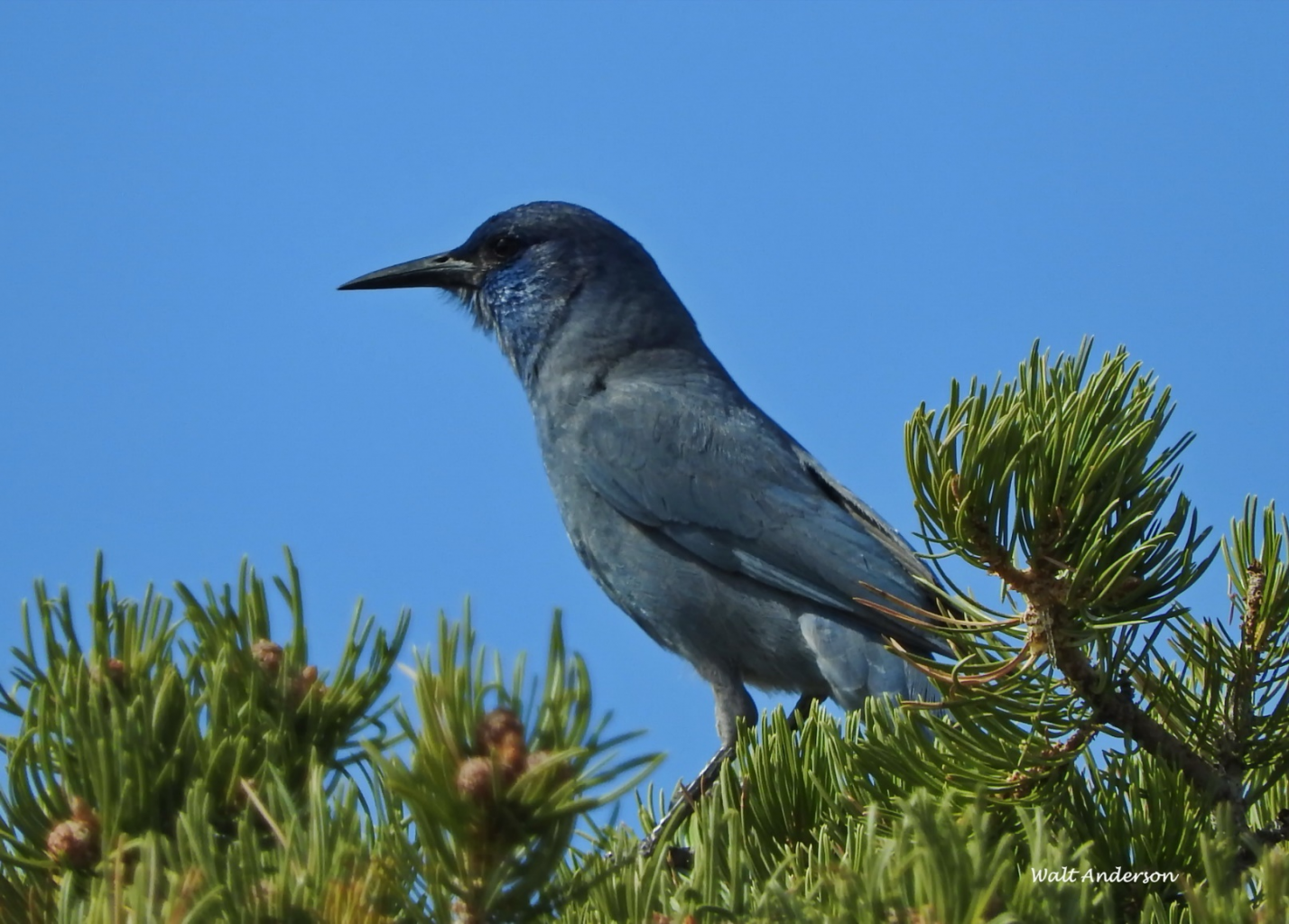
The Pinyon Jay range can overlap much of that of Woodhouse’s Scrub-Jay, but it too is more gregarious and is a deeper blue with a shorter tail and longer bill that lacks rictal bristles.
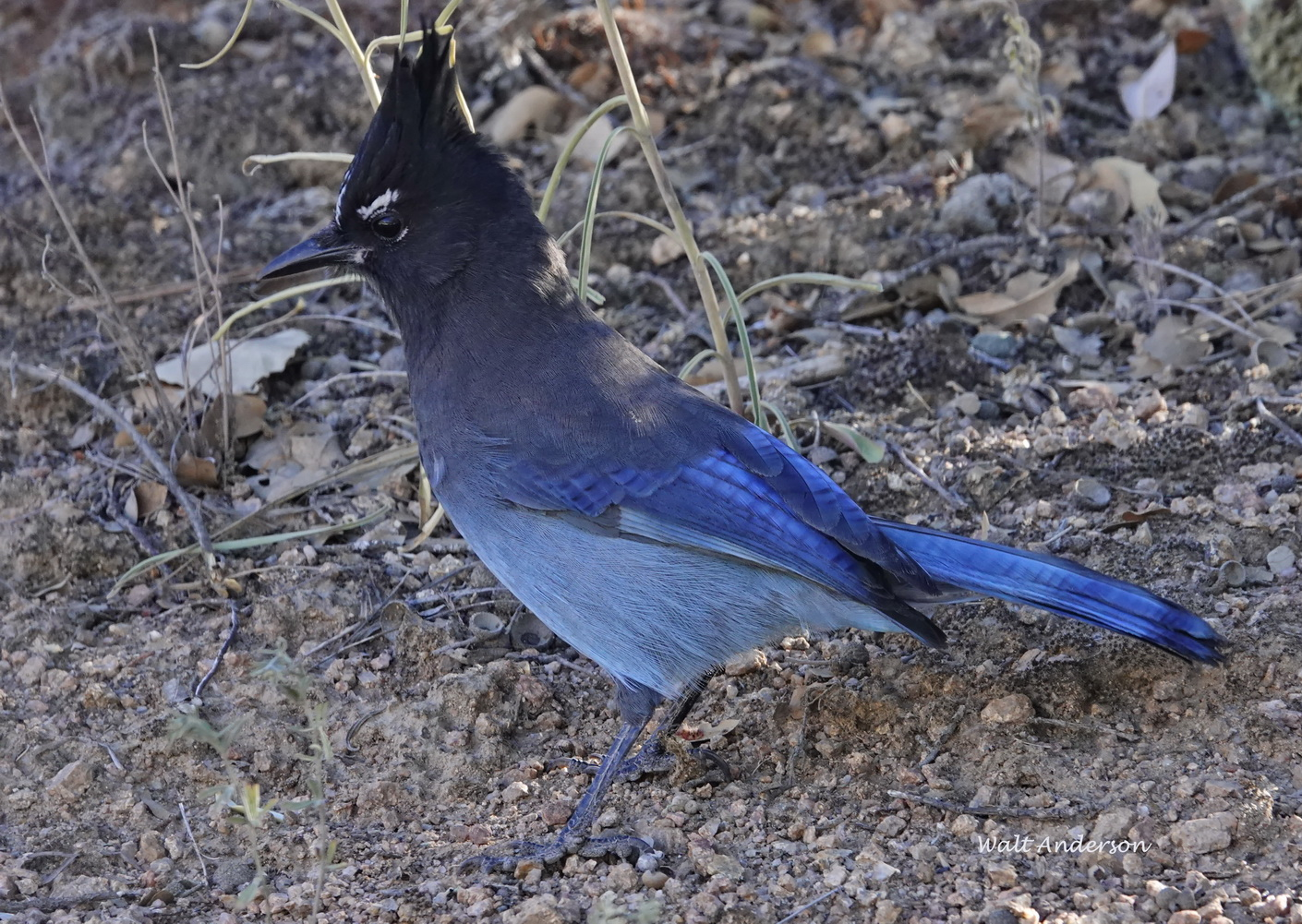
The Steller’s Jay is a more montane species. Though it has a white eyebrow, it is markedly different with its dark head, prominent crest, and barred flight feathers.
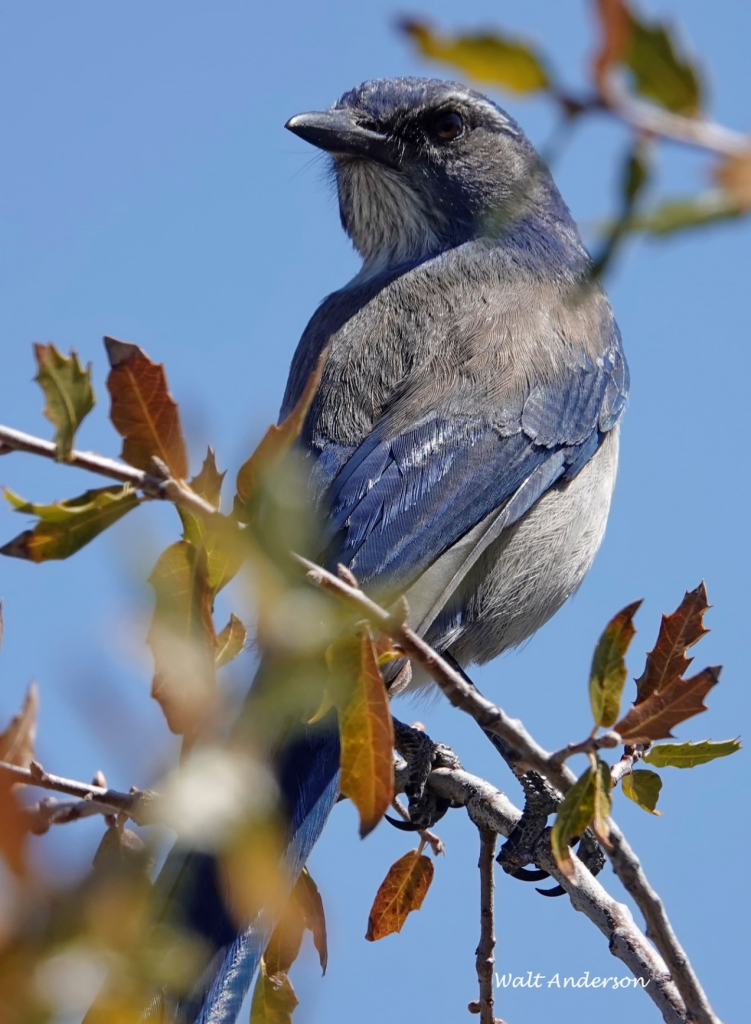
All right, after this lesson, you will know better than to refer to our jays as “blue jays.” I hope. The blue in their feathers is a structural color, not a pigment, as the microarchitecture of each feather reflects light from the blue part of the spectrum. If you put a jay feather on a light table so that it is illuminated from behind, it looks brownish, as it has melanin crystals in it. In good light, a jay is certainly as lovely as any bluebird (a small thrush!).
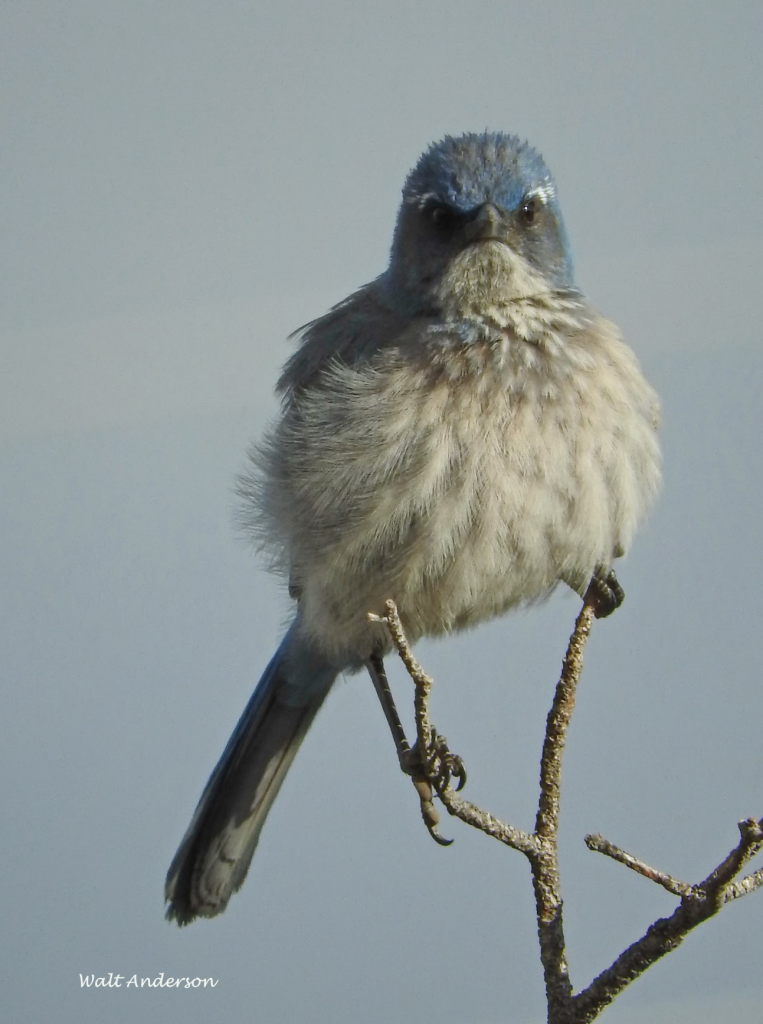
These are dynamic birds, usually in motion, and they are rarely quiet. The literature describes some of their vocalizations: courtship song, Weep call, scold, Zeep, Zraanh, Shlenk, rattle, Chuk, Nhyuk, wheeze, distress screech, snarl, Kuk, beg, Poit, Half-Poit, and Wah. Obviously, the researchers have attempted to suggest meaning (e.g., beg, scold) to some calls and onomatopoeic impressions of sounds to others; I’ve capitalized those.
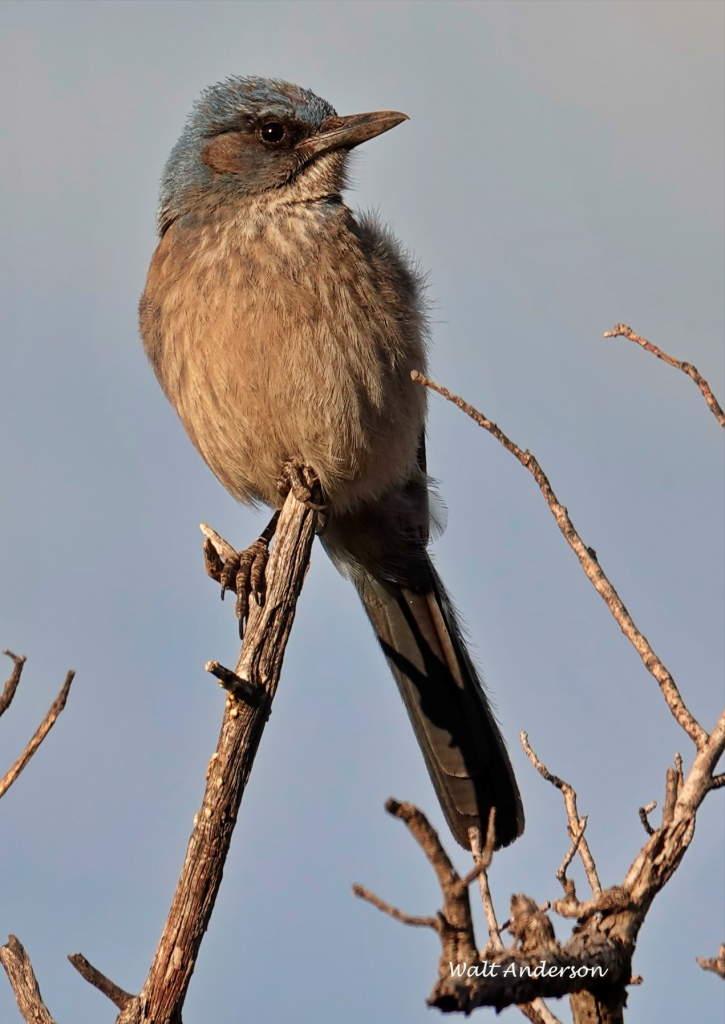
Like other corvids, jays are altricial (naked as a jay bird) at hatching. They grow quickly, however, but depend on their parents for support for some weeks post-fledging (not dissimilar to our sending kids to college).
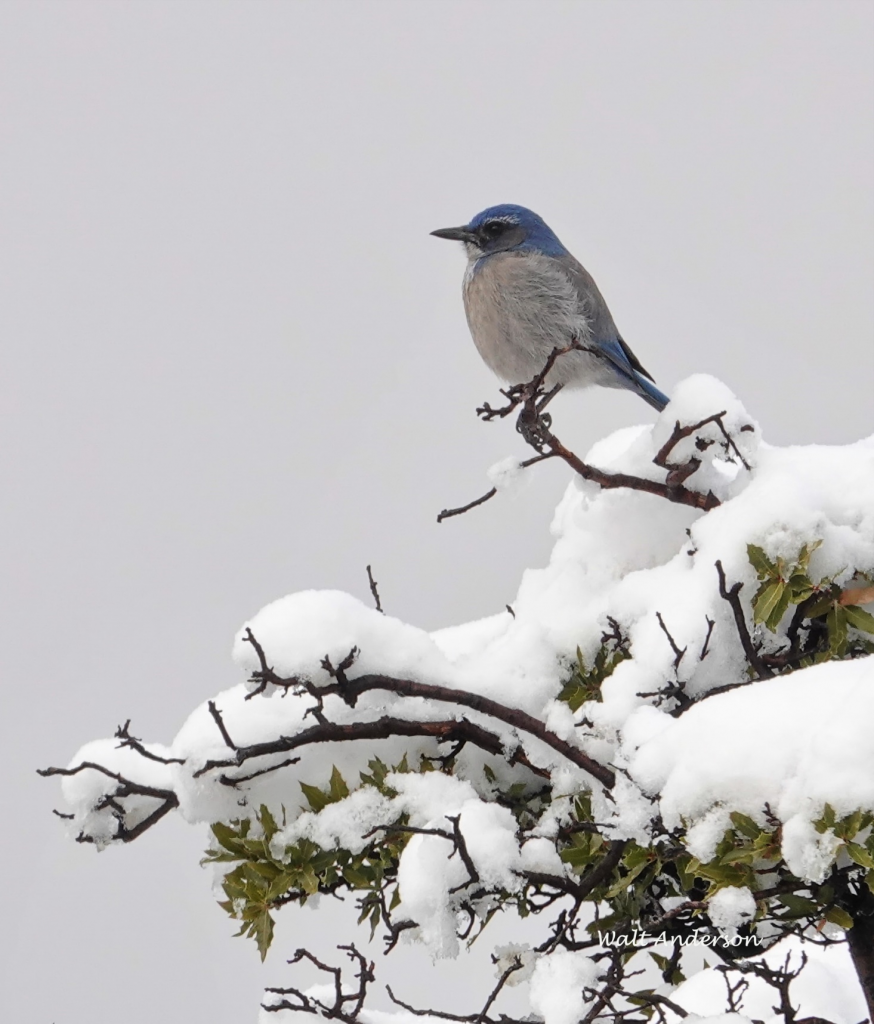
I am not a fan of naming critters for people. For some time, these were called the Great Basin Jay, which is a bit better, though their range extends beyond that biogeographic province. Samuel Washington Woodhouse was an early doctor/naturalist who was on the Sitgreave’s Expedition through what is now northern and western Arizona in 1851. Woodhouse’s name is also attached to a toad and an antpecker (yes, there is such a bird!).

I have a lot of admiration for these intelligent birds, so last year I did an 18 x 24” watercolor of one on a snowy oak branch. Currently, this is a species that is doing well, but if drought and disease kill off vast stands of pinyons and junipers (not impossible!), then these too would be threatened. Climate change is nothing to mess with, and delaying action may set the climate trajectory on a course that could be beyond our mitigation.
